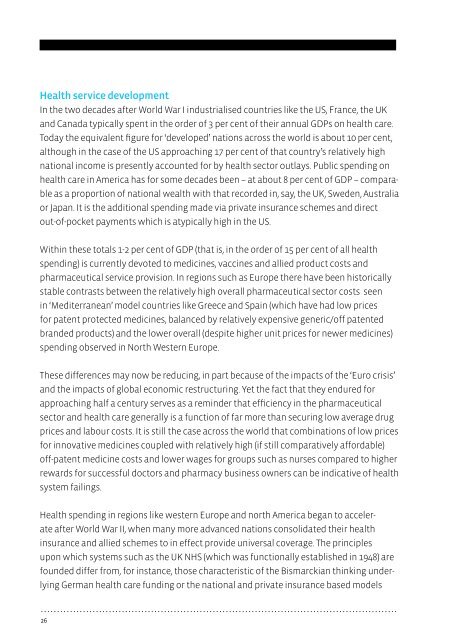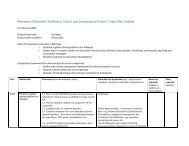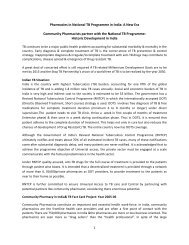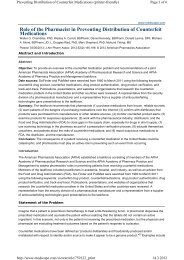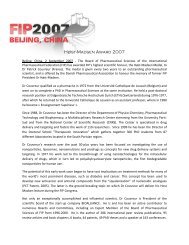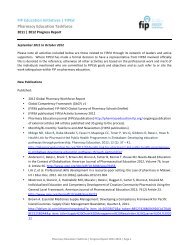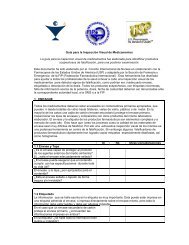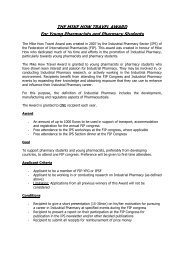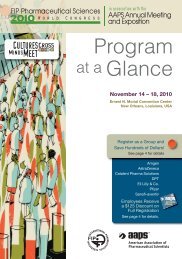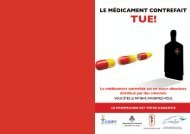Contents - FIP
Contents - FIP
Contents - FIP
Create successful ePaper yourself
Turn your PDF publications into a flip-book with our unique Google optimized e-Paper software.
Health service development<br />
In the two decades after World War I industrialised countries like the US, France, the UK<br />
and Canada typically spent in the order of 3 per cent of their annual GDPs on health care.<br />
Today the equivalent figure for ‘developed’ nations across the world is about 10 per cent,<br />
although in the case of the US approaching 17 per cent of that country’s relatively high<br />
national income is presently accounted for by health sector outlays. Public spending on<br />
health care in America has for some decades been – at about 8 per cent of GDP – comparable<br />
as a proportion of national wealth with that recorded in, say, the UK, Sweden, Australia<br />
or Japan. It is the additional spending made via private insurance schemes and direct<br />
out-of-pocket payments which is atypically high in the US.<br />
Within these totals 1-2 per cent of GDP (that is, in the order of 15 per cent of all health<br />
spending) is currently devoted to medicines, vaccines and allied product costs and<br />
pharmaceutical service provision. In regions such as Europe there have been historically<br />
stable contrasts between the relatively high overall pharmaceutical sector costs seen<br />
in ‘Mediterranean’ model countries like Greece and Spain (which have had low prices<br />
for patent protected medicines, balanced by relatively expensive generic/off patented<br />
branded products) and the lower overall (despite higher unit prices for newer medicines)<br />
spending observed in North Western Europe.<br />
These differences may now be reducing, in part because of the impacts of the ‘Euro crisis’<br />
and the impacts of global economic restructuring. Yet the fact that they endured for<br />
approaching half a century serves as a reminder that efficiency in the pharmaceutical<br />
sector and health care generally is a function of far more than securing low average drug<br />
prices and labour costs. It is still the case across the world that combinations of low prices<br />
for innovative medicines coupled with relatively high (if still comparatively affordable)<br />
off-patent medicine costs and lower wages for groups such as nurses compared to higher<br />
rewards for successful doctors and pharmacy business owners can be indicative of health<br />
system failings.<br />
Health spending in regions like western Europe and north America began to accelerate<br />
after World War II, when many more advanced nations consolidated their health<br />
insurance and allied schemes to in effect provide universal coverage. The principles<br />
upon which systems such as the UK NHS (which was functionally established in 1948) are<br />
founded differ from, for instance, those characteristic of the Bismarckian thinking underlying<br />
German health care funding or the national and private insurance based models<br />
26


